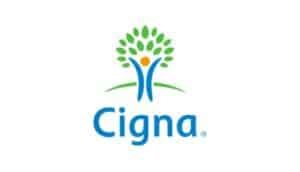As 2020 high school graduations are wrapping up around the country, millions of young adults are preparing for a new stage in their young lives. Many will be leaving home for the first time and will be experiencing new freedom and responsibility. First year college will be making new friends, juggling time for class, studying, work, and socializing. But along with the new freedom and excitement, there are dangers of which they should be aware. One of the most serious is drinking. Having entered an environment often less restrictive that life at home, young college students may be easily influenced by others and may be naive to the dangers of alcohol. While drinking and partying is typically considered part of college culture, studies past and present clearly illustrate patterns of increased drinking and binge drinking which, at the least, can derail the pursuit of education, and worse, can lead to behaviors and situations which can lead to death.
Adverse Effects
The adverse effects brought by continued alcohol use and binge drinking by college students are varied. According to a report published in 2012 by the National Institute on Alcohol Abuse and Alcoholism: Abusive and underage college drinking are significant public health problems, and they exact an enormous toll on the intellectual and social lives of students on campuses across the United States (College Drinking). The report also states that many college students arrive at school with some history of drinking but that the atmosphere of the college culture often exacerbates existing drinking habits. Disturbingly, the study has found that: more than 80 percent of college students drink alcohol and almost half report binge drinking in the past 2 weeks (College Drinking).
Among the dangers of college drinking, the report includes:
- DEATH: Each year an estimated 1,825 college students between the ages of 18 to 24 die from alcohol related unintentional injuries, including motor vehicle crashes.
- INJURY: Each year an estimated 599,000 students between the ages of 18 to 24 are unintentionally injured under the influence of alcohol.
- ASSAULT: Each year an estimated 696,000 students between the ages of 18 to 24 are assaulted by another student who has been drinking.
- SEXUAL ABUSE: Each year an estimated 97,000 students between the ages of 18 to 24 are victims of alcohol-related sexual abuse or date rape (College Drinking).
Additional consequences, according to the report, include: poor academic performance, incidents of drunk driving, unsafe/unprotected sex, the development of alcohol dependence, suicide attempts, vandalism, property damage, and involvement with law enforcement (College Drinking). Based upon these dire consequences related to college drinking, a closer look at students drinking habits, in particular binge drinking is in order.
The Harvard Study
A review of a 14 year study begun in 1994, conducted by The Harvard School of Public Health College, defines binge drinking as: the consumption of five drinks in a row for males or four drinks in a row for females on a single occasion within a 2-week time period and frequent binge drinking as [one] who binged one or two times in a two-week period and/or [one] who binged three or more times in a two-week period (Wechsler, et.al, 8) The study included more than 50,000 students at 140 four year colleges throughout the country and addressed among other issues, trends relating to binge drinking. Answering the question; binge drinking increasing the researchers determined:
From 1993 until today, the proportion of students who binge drink (44 percent) has remained remarkably stable. However, the most extreme forms of binge drinking are increasing. Frequent binge drinkers, for example, increased from about 20 percent of all students in 1993 to 23 percent in 1999. Other forms of extreme drinking are also on the rise (Wechsler, et.al, 8).
The study’s researchers also concluded: heavy alcohol use affects more students than other drugs combined. More students drink than use cocaine, marijuana, or cigarettes combined (Wechsler, et.al, 8). The Harvard Study also considered groups most often participating in binge drinking on college campuses. According to the study: student binge drinkers tend to be male, white, and under 24 years of age, the strongest predictor of binge drinking is fraternity or sorority residence or membership. Four of five students who live in fraternities and sororities are binge drinkers and, according to the study:
Students least likely to binge are African American or Asian, age 24 years or older, or married. As a group, African Americans, and particularly women, have the lowest prevalence of binge drinking. In 1999, only 16 percent of African American students binged, compared to 49 percent of white students. Students who put a priority on their studies, who devote time to special interests such as art, or who participate in volunteer activities are less likely to binge (Wechsler, et.al, 9).
These conclusions appear to describe a sort of on-going Animal House mentality within the culture of fraternities and sororities on college campuses. The study proceeds to identify consequences to be expected by students as a result of frequent binge drinking. According to the Harvard Study, negative consequences which result from frequent binge drinking include:
Every year, students die in alcohol-related tragedies: acute alcohol poisonings, car accidents, drownings, falls, and fights. While such tragedies are relatively rare, they underscore the multiple and far-reaching consequences of binge drinking. Compared to non-binge drinkers, frequent bingers are 17 times more likely to miss a class, ten times more likely to vandalize property, and eight times more likely to get hurt or injured as a result of their drinking. Binge drinking also contributes to poor academic performance and college dropout rates (Wechsler, et.al, 9).
The Effect on Women Students
While these consequences are unquestionably dire, the affects on young women students are even more disturbing. The difference in metabolism between men and women, according to the study, combined with inexperience, puts women at greater risk of loss of control, if they attempt to match male friends drink for drink. The study puts forward the following disturbing news:
Heavy alcohol use, coupled with inexperience with drinking, puts young women in serious jeopardy for sexual assault. About 10 percent of female students who are frequent binge drinkers report being raped or subjected to non-consensual sex, compared to only 3 percent of non-bingeing female students. Furthermore, most campus rapes occur after heavy drinking (Wechsler, et.al, 10).
According to the study, female students appear to be less willing to admit to being heavy drinkers compared to their male counterparts. Among the students responding to the study, 20 percent of male students who binged up to three times in a two week considered their drinking to be problematic; compared to just seven percent of female students who drank similarly (Wechsler, et.al, 10). In conclusion, the Harvard Study puts forward strategies for colleges to consider while attempting to battle this problem.
Acknowledging that colleges typically try to deal with the individual who displays the signs of heavy drinking, mainly by educational means, the researchers state that this is merely a partial response. The study determined that a much broader approach should be considered. Their advice to colleges is simple…
Colleges Need to Adopt Comprehensive Strategies
Colleges need to adopt comprehensive strategies that address supply and demand, and seek to reshape the social environment that influences student drinking behavior. Such strategies include working with the community to curtail supply and to enforce the legal drinking age. Their success depends on the cooperation of administrators, students, parents, and police (Wechsler, et.al, 11).
The issues faced by incoming college students are widespread and critical; as they attempt to navigate this new world. Parents may wish to educate themselves on the perils associated with heavy drinking on college campuses around the country, and make it a priority to discuss these issues as their child spreads his/her wings. The research is clear; college drinking can lead to serious consequences which can derail a future, and worse, lead to devastating, even fatal results.
References:
College Drinking. National Institute on Alcohol Abuse and Alcoholism. National Institute on Alcohol Abuse and Alcoholism. April 2012. Retrieved from: https://pubs.niaaa.nih.gov/publications/CollegeFactSheet/CollegeFactSheet.pdf
Wechsler, Henry Binge Drinking on America’s College Campuses. Harvard School of Public Health College. n.d.: Retrieved from: https://www.popcenter.org/problems/rape/pdfs/cas_mono_2000.pdf











